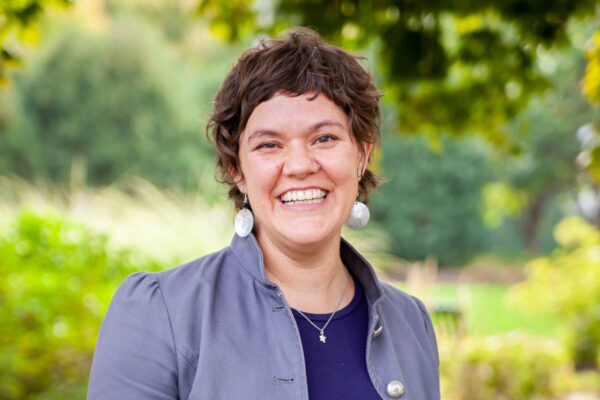An amazing woman
Muriel Johannessen’s portrayal of Katharina von Bora Luther began a few years back, when she was serving a Lutheran church in North Carolina as a deacon.
“We started talking about the fact we hear a lot about Martin Luther, but we don’t hear much about his wife, who was really an amazing woman,” said Muriel. She will be visiting St. Paul on Saturday morning as part of Connect and Serve, the annual fall women’s event. The morning is from 9-11 a.m., with a short reflection by Pastor Sara Olson-Smith, the portrayal of Katharina von Bora Luther, then a time of quilting and assembling school kits for Lutheran World Relief. Sign up for the event.
Muriel, who now lives in Newton, Iowa, began researching Katharina. She started putting together a costume, trying to keep it as authentic as possible.
Katharina went to live at a boarding school, then convent as a child. Her father wanted her to be educated. She later escaped the convent, and went on to marry Martin Luther. They had six children, and Katharina managed the Luther household with strength and hospitality. “People spoke of her so highly,” Muriel said.
“Martin Luther found peace when he married an ex-nun named Katharina von Bora, whom he had helped to escape from her nunnery in an empty fish barrel and had taken refuge in Wittenberg. Katharina von Bora was born in 1499, the daughter of an impoverished nobleman. In 1504 she went to the convent school of the Benedictine order in Brehna (near Halle) and entered the convent of Nimbschen, near Grimma in 1508. In 1515 she took her vows and became a nun at the soonest possible date. In 1523 she left the convent and ended up in Wittenberg. By June 1525, echoing a trend across Europe as former nuns and monks married, she became Mrs. Martin Luther. Katharina was 16 years younger than Martin and together they had six children. Luther doted on his large family but was able to devote himself to the simpler pleasures of life, gardening, writing music. Katharina took over the household, particularly the household expenses; it is said that Luther did not have a clue how to run a household. She also proved herself to be a good housewife and gardener. Luther’s household included not only his wife and six children, but also one of Katharina’s relatives and after 1529 six of Luther’s sister’s children. Luther also housed students in his home to help the family’s financial situation. For recreation the Luthers enjoyed a bowling lane of sorts in their garden, board games such as chess, and music. They had a pet dog. They grew much of their own food in a small garden at the Black Cloister and then later as a farm outside Wittenberg. Luther and Katharina were diligent parents, disciplining their children, but doing so in love. Their home was noted for its liveliness and its happiness. Katharina outlived her husband by six years. She died on December 20, 1552 in Torgau where she had fled from the plague in Wittenberg.” – Martin Luther, The Reluctant Revolutionary, PBS.
This year is the 500th anniversary of the reformation, when Martin Luther posted his 95 Theses, also known as the Disputation on the Power of Indulgences. The document started a great schism in the Catholic Church.
“As we celebrate the anniversary of the reformation and we celebrate Martin Luther, we also need to celebrate the life of others who were supportive in the background, enabling to be free to what God was calling him to do,” Muriel said.




